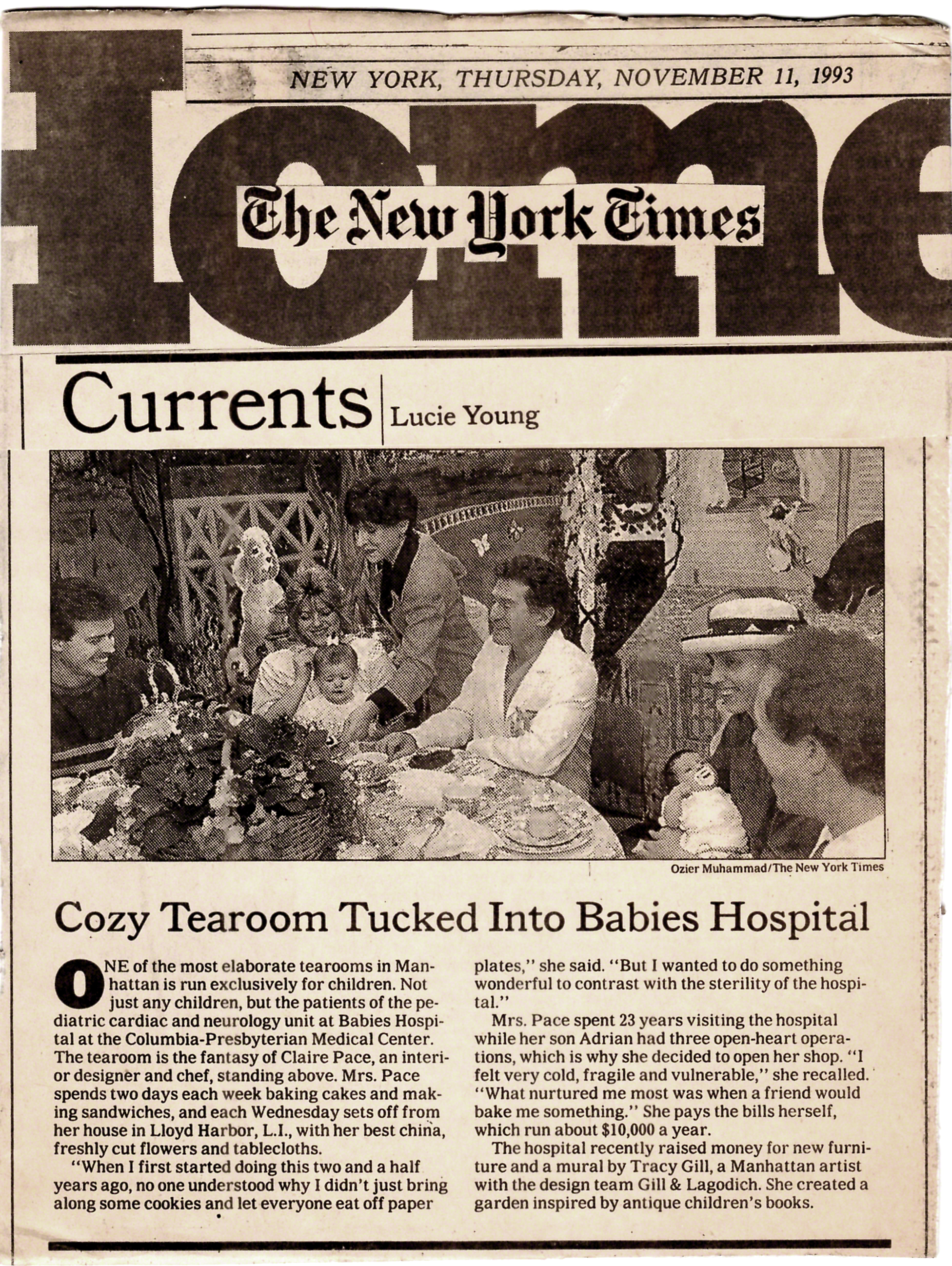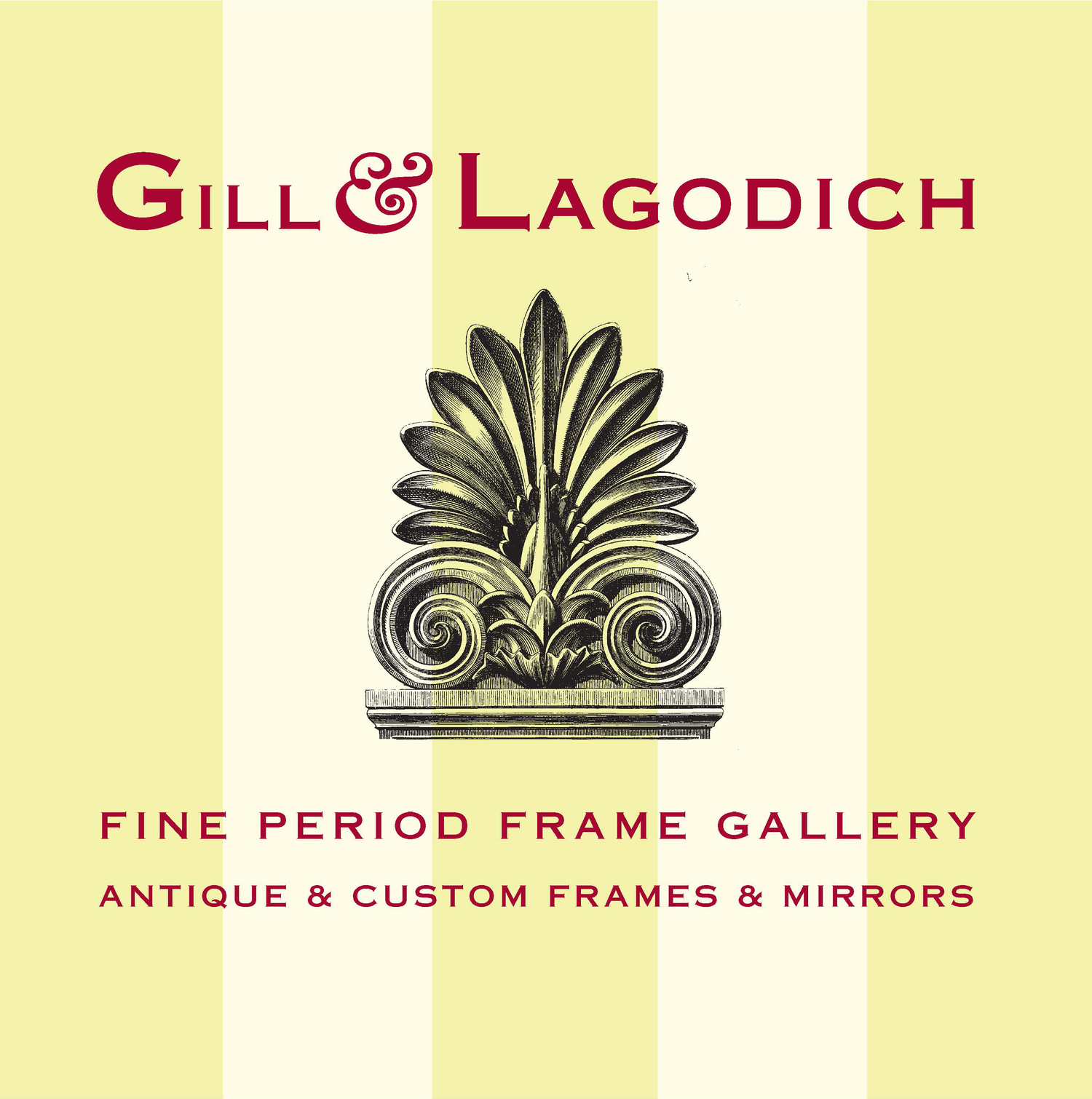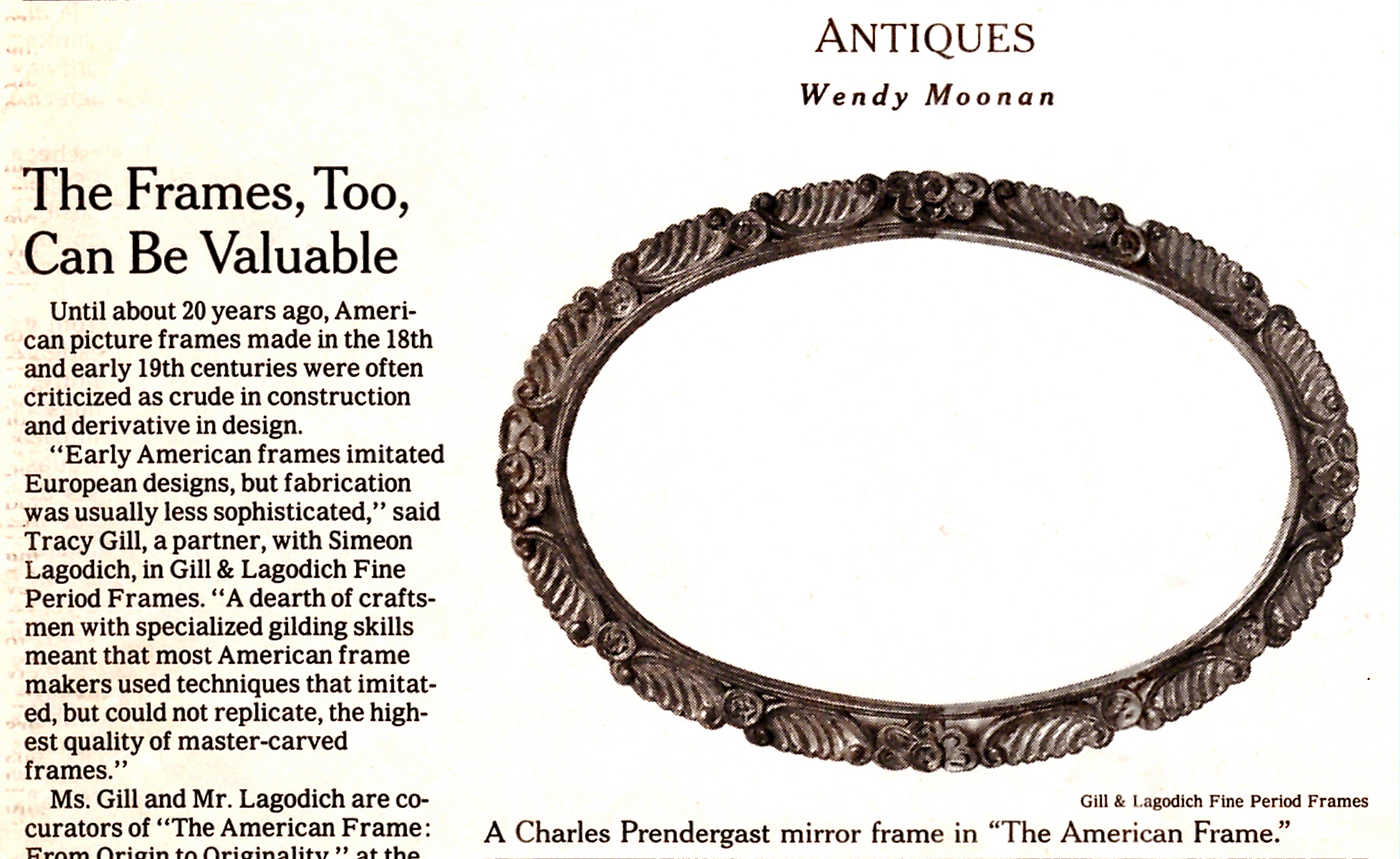THE NEW YORK TIMES
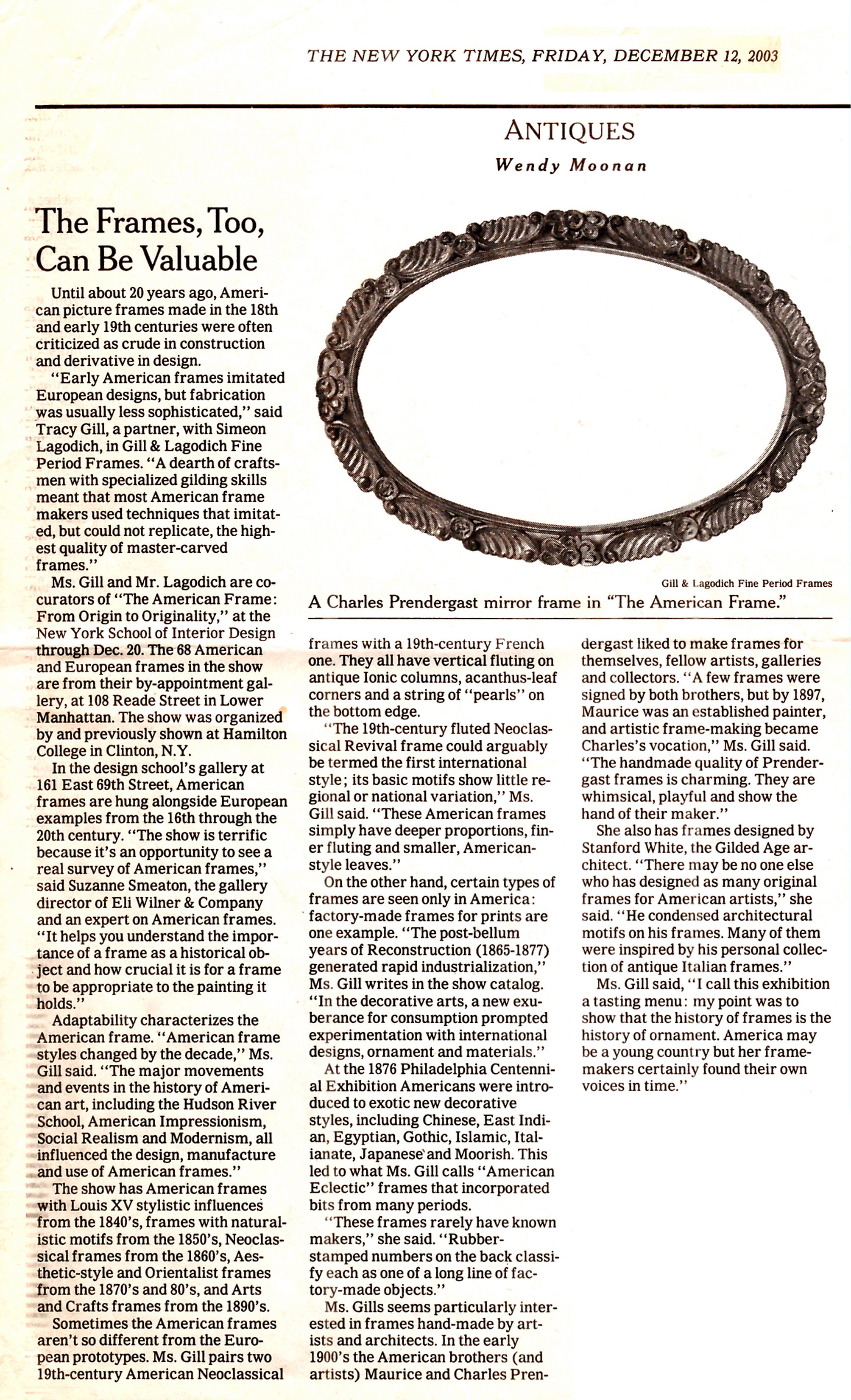
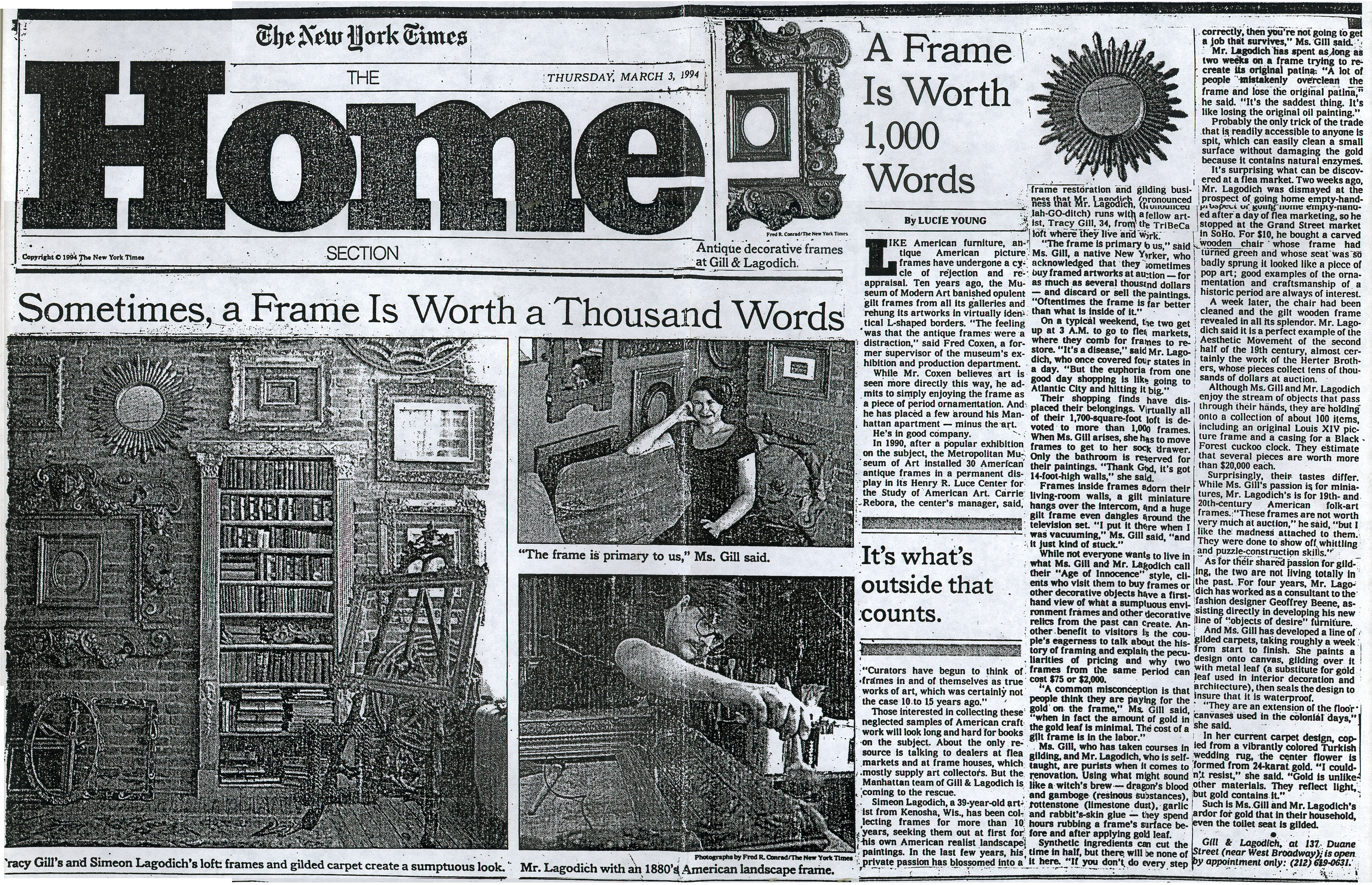
A Frame Is Worth 1,000 Words, by Lucie Young, March 3, 1994
On a typical weekend, the two get up at 3 A.M. to go to flea markets, where they comb for frames to restore. "It's a disease," said Mr. Lagodich, who once covered four states in a day. "But the euphoria from one good day shopping is like going to Atlantic City and hitting it big."
Their shopping finds have displaced their belongings. Virtually all of their 1,700-square-foot loft is devoted to more than 1,000 frames. When Ms. Gill arises, she has to move frames to get to her sock drawer. Only the bathroom is reserved for their paintings. "Thank God, it's got 14-foot-high walls," she said.
Frames inside frames adorn their living-room walls, a gilt miniature hangs over the intercom, and a huge gilt frame even dangles around the television set. "I put it there when I was vacuuming," Ms. Gill said, "and it just kind of stuck."
While not everyone wants to live in what Ms. Gill and Mr. Lagodich call their "Age of Innocence" style, clients who visit them to buy frames or other decorative objects have a firsthand view of what a sumptuous environment frames and other decorative relics from the past can create. Another benefit to visitors is the couple's eagerness to talk about the history of framing and explain the peculiarities of pricing and why two frames from the same period can cost $75 or $2,000.
"A common misconception is that people think they are paying for the gold on the frame," Ms. Gill said, "when in fact the amount of gold in the gold leaf is minimal. The cost of a gilt frame is in the labor."
Ms. Gill, who has taken courses in gilding, and Mr. Lagodich, who is self-taught, are purists when it comes to renovation. Using what might sound like a witch's brew -- dragon's blood and gamboge (resinous substances), rottenstone (limestone dust), garlic and rabbit's-skin glue -- they spend hours rubbing a frame's surface before and after applying gold leaf.
Synthetic ingredients can cut the time in half, but there will be none of it here. "If you don't do every step correctly, then you're not going to get a job that survives," Ms. Gill said.
Mr. Lagodich has spent as long as two weeks on a frame trying to recreate its original patina. "A lot of people mistakenly overclean the frame and lose the original patina," he said. "It's the saddest thing. It's like losing the original oil painting."
Probably the only trick of the trade that is readily accessible to anyone is spit, which can easily clean a small surface without damaging the gold because it contains natural enzymes.
It's surprising what can be discovered at a flea market. Two weeks ago, Mr. Lagodich was dismayed at the prospect of going home empty-handed after a day of flea marketing, so he stopped at the Grand Street market in SoHo. For $10, he bought a carved wooden chair whose frame had turned green and whose seat was so badly sprung it looked like a piece of pop art; good examples of the ornamentation and craftsmanship of a historic period are always of interest.
A week later, the chair had been cleaned and the gilt wooden frame revealed in all its splendor. Mr. Lagodich said it is a perfect example of the Aesthetic Movement of the second half of the 19th century, almost certainly the work of the Herter Brothers, whose pieces collect tens of thousands of dollars at auction.
Although Ms. Gill and Mr. Lagodich enjoy the stream of objects that pass through their hands, they are holding onto a collection of about 100 items, including an original Louis XIV picture frame and a casing for a Black Forest cuckoo clock. They estimate that several pieces are worth more than $20,000 each.
Surprisingly, their tastes differ. While Ms. Gill's passion is for miniatures, Mr. Lagodich's is for 19th- and 20th-century American folk-art frames. "These frames are not worth very much at auction," he said, "but I like the madness attached to them. They were done to show off whittling and puzzle-construction skills."
As for their shared passion for gilding, the two are not living totally in the past. For four years, Mr. Lagodich has worked as a consultant to the fashion designer Geoffrey Beene, assisting directly in developing his new line of "objects of desire" furniture.
And Ms. Gill has developed a line of gilded carpets, taking roughly a week from start to finish. She paints a design onto canvas, gilding over it with metal leaf (a substitute for gold leaf used in interior decoration and architecture), then seals the design to insure that it is waterproof.
"They are an extension of the floor canvases used in the colonial days," she said.
In her current carpet design, copied from a vibrantly colored Turkish wedding rug, the center flower is formed from 24-karat gold. "I couldn't resist," she said. "Gold is unlike other materials. They reflect light, but gold contains it."
Gill & Lagodich … is open by appointment only: (212) 619-0631.
